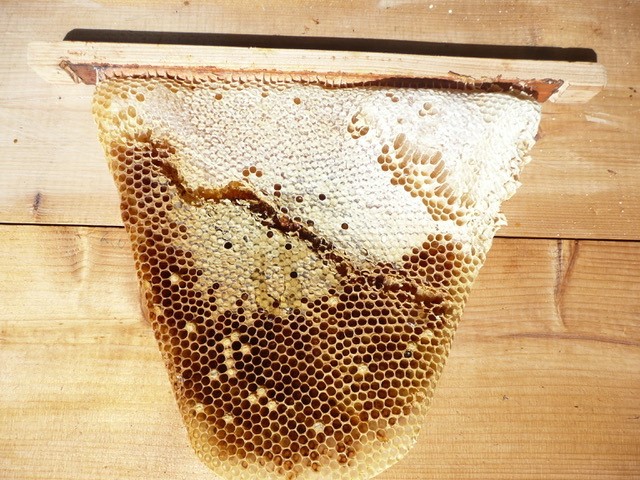Bee Blog March 2018
Hello,
I am Gerald Bushby (pronounced bush bee!) a beekeeper in Weston on the Green, a small village in Oxfordshire. I am going to be writing a monthly blog about the bees in my apiary. I hope you will find it interesting. I should start by saying that I am not an expert, having only kept bees for three years. Anything I say is my own personal opinion; I accept that there may often be other views and opinions.
Spring has still not arrived. On the contrary night temperatures are well below freezing and snow is still falling. In the last week a few bees have been flying when the sun hits the hive, but they seem to find difficulties moving their limbs in the cold. On returning to the hive entrance some bees have the characteristics of a drunken person walking down a corridor, they appear to swerve from side to side and often miss the entrance hole bumping into the hive wall before they manage to find the entrance.
Last month I explained the development of the modern bee hive following on from the recognition of the “bee space” by Lorenzo Langstroth. Most bee hives in the world still follow this basic principal of a rectangular box with a bottom and a roof and removable frames. In recent times however two differing directions of keeping bees have become popular which reflect different ways of thinking.
In one direction there has been a move for a simpler more natural way of beekeeping with the use of the Top Bar Hive. In another direction an inventor from Australia has produced a device called a Flow Hive which used plastic comb with a completely different way of extracting the honey, a “hi tech” solution. It is interesting to note however that both types of hive still depend on Langstroth’s “bee space”. Both types of hives have advantages and disadvantages.
The Top Bar Bee Hive is essentially a horizontal trough closed at both ends and covered by individual bars of wood about 32mm wide. Some form of weather protecting roof is then placed on top. The trough usually has legs attached to give a convenient working height of about 900mm. A hole is formed in the trough to allow access and egress for the bees. Bees introduced into a Top Bar Hive naturally start to build comb down from the top bars. The comb takes on the shape of the trough from top to bottom. The width of the comb is determined by the bees and is related to the depth of cell they require for storing their brood. By trial and error it has been found that if the top bars are made at 32mm wide the comb width produced by the bees will be separated from the next comb by the “bee space” allowing the beekeeper to remove each top bar individually from the top of the hive. My photograph this month shows a typical Top Bar Hive comb.
A big advantage of the Top Bar Hive is that it does not rely on factory built components. It can be made of all sorts of materials, often scrap timber. This is very advantageous in third world countries and is central to the work of Bees for Development, the charity I and 2BScientific support. Bees for Development promotes sustainable beekeeping to combat poverty and to build sustainable, resilient livelihoods. The Top Bar Hive suits this objective.
The Flow Hive has only emerged in the last few years. A father and son, Cedar and Stuart Anderson, from Byron Bay in Australia, developed a new design of hive where honey can be collected without having to open the hive and disturb the bees. It relies on a highly engineered split cell system, made of plastic, where the bees store their honey. The beekeeper just has to turn on a tap for the honey to flow out. Needless to say this hi tech development has caused controversy in the bee keeping world. On one hand some people say that this system is better for bees creating less disturbance, on the other hand people have concern with the use of plastics comparing the system to “powdered potatoes and battery chickens”. It will be interesting to see if it passes the test of time.
One interesting fact about the Flow Hive is that it would probably have never reached production without the internet. In February 2015 Cedar and Stuart launched a crowdfunding campaign hoping to raise the $70,000 they needed to go into production with the Flow Hive. Instead, they raised $12 million and received nearly 25,000 orders from over 130 countries. I hope the Flow Hive is as good for bees as it has been for Cedar and Stuart.
I am a proud supporter of the ‘Bees for development’ charity, my love of the bee drew me to this wonderful UK based charity and the great work they do around the world with Bees and the impact they can have on people’s lives. Please help me support this wonderful organisation, as 2BScientific will be doing with donations to this hard-working charity.
Next time : Surely spring must be on the way now?
